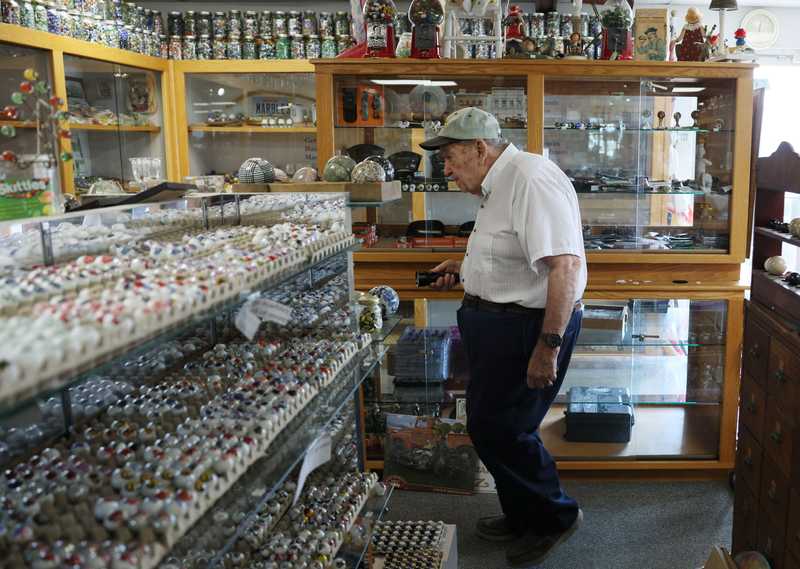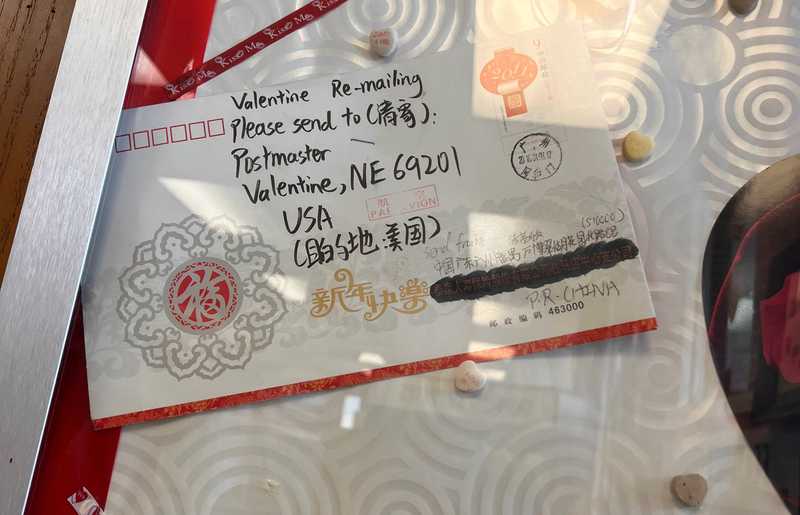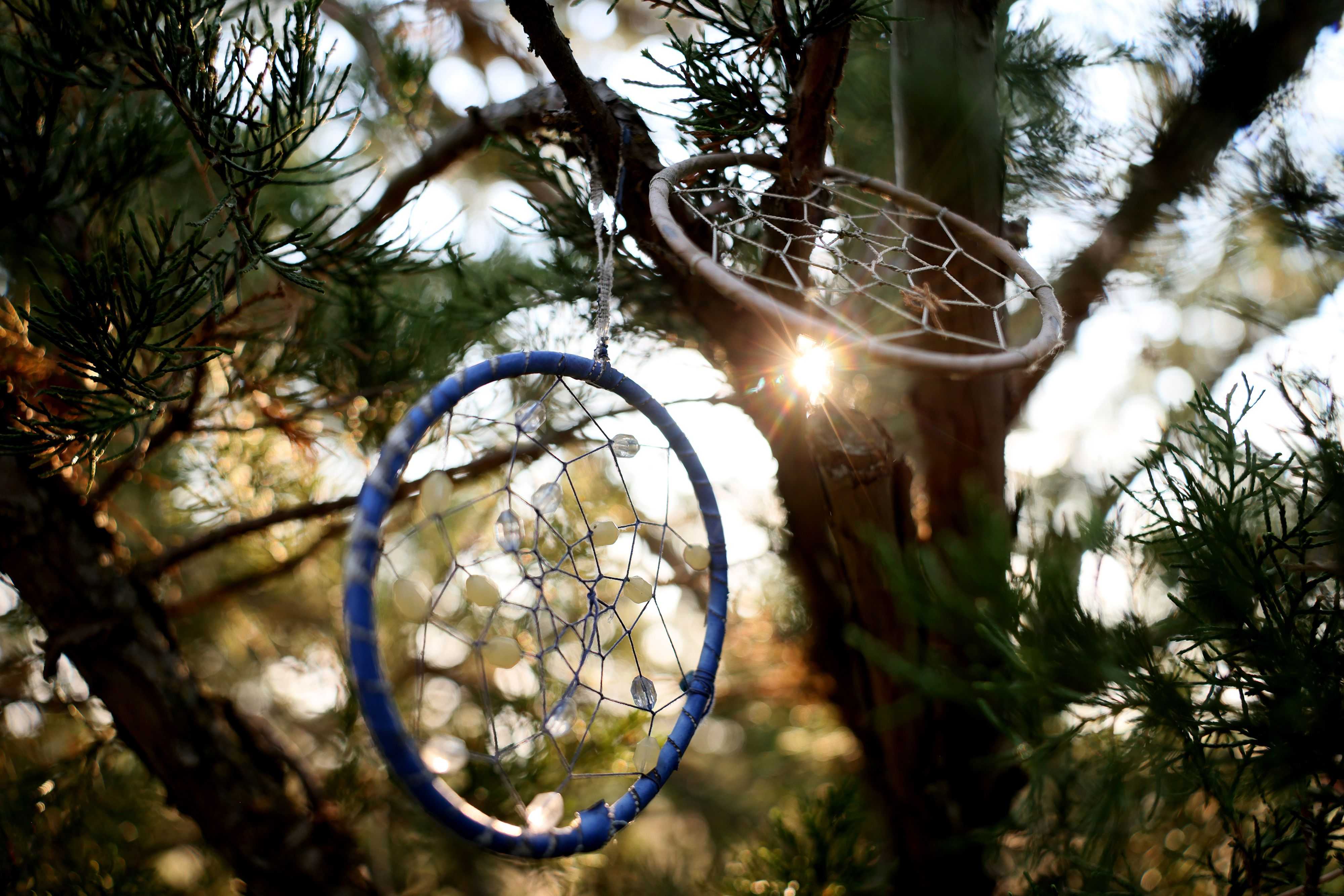
Seattle team
Oct. 30, 2022
A Ponca girl died on the Trail of Tears. A Nebraska community cared for her grave ever since.
NELIGH, Neb. — The father’s plea could so easily have been forgotten: a handful of phrases in an unfamiliar language, lost to the rain and the rush of the wind in the pines on that spring day in 1877.
His daughter, 18 months old, had died the day before. The next morning his family would leave her grave behind, probably forever, just as they had left their beloved ancestral homeland days before, forced off by the US government.
Perhaps it was the modesty of Black Elk’s request, against the backdrop of such sweeping loss, that compelled the white townspeople’s attention. Or maybe it was the simple spectacle of grief, a pain so purely human it transcended even language.

Whatever made them feel the moment’s weight, the people of the small Nebraska town listened closely when Black Elk spoke that rainswept day. Someone who knew the Ponca language translated his words, and soon after someone wrote them down:
“I want the whites to respect the grave of my child, just as they do the graves of their own dead,” Black Elk said. “The Indians don’t like to leave the graves of their ancestors, but we had to move and hope it will be for the best. I leave the grave in your care. I may never see it again. Care for it for me.”
For more than 140 years, they have.
Recent stories from the Seattle team
On the quiet hilltop where the child is buried, her resting place has never been forgotten. A tall pine stands opposite the spot, its boughs outstretched like protecting arms. Crickets chirp and dry pine cones crunch underfoot; a horse whinnies on a nearby farm. And atop the small marble headstone that the townspeople placed there, their descendants still leave tokens, coins and stones and crystals, honoring a promise made long before they were born.
Her name was White Buffalo Girl, and her death that May was among the first of many. Forcibly removed from their homeland, like other Native American tribes, and marched 550 miles to Oklahoma in the shameful, racist chapter of American history known as the Trail of Tears, the small, peaceful Ponca tribe lost one third of its people to hardship and disease within a year.
Given the vast scale of the Poncas’ suffering, it might seem a small thing, that one small town showed respect to a single grave. But in the context of the time, it was extraordinary. “This was not a normal thing to happen, when white settlers encountered Native people,” said Joe Starita, a retired University of Nebraska-Lincoln professor who has written extensively on the tribe’s history. “Humanity did not lead the day in the 1870s. That’s why it takes your breath away.”
As the story of White Buffalo Girl has been told and retold and burnished into legend, some have worried that it focuses too much on the white settlers’ decency, instead of on the larger injustice to the tribe. Ron Westlake, the curator of the Antelope County Historical Society, strives to reorient the storytelling. “Please make this story more about what happened to the Ponca and less about Neligh,” he urged a reporter via e-mail.
But Ricky Wright, the culture director for the Ponca Tribe of Nebraska, sees enduring beauty in Neligh’s loyalty, and in the bond it forged between the Ponca and the mostly-white town.
“It means everything,” he said. “We will never forget it. It created a relationship that continues to this day, and that’s the thing to take away from it.”
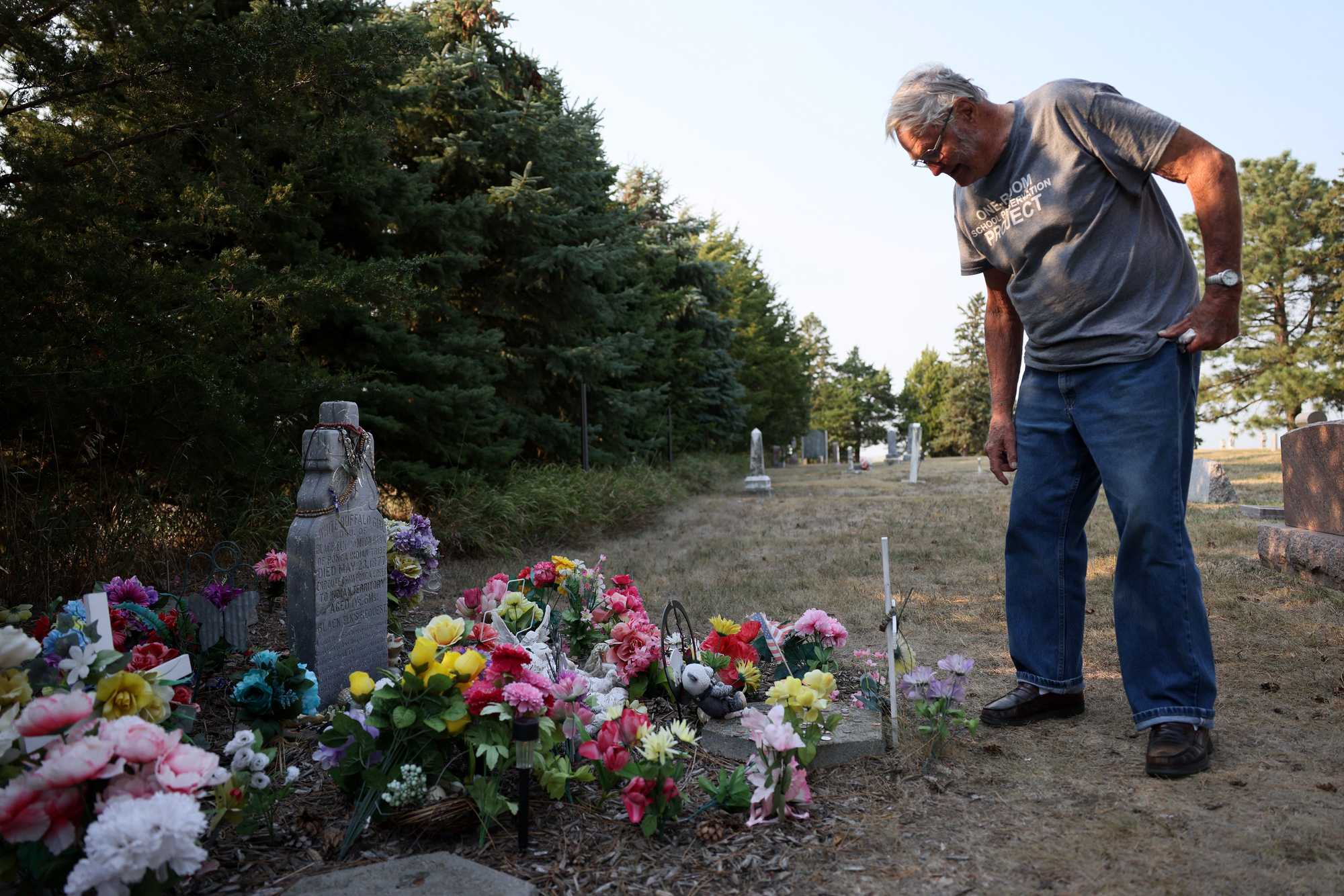
Levern Hauptmann, a 90-year-old farmer and historian in Neligh, has felt the story’s pull since he first heard it in his one-room schoolhouse as a child. As he accumulated griefs of his own — including the death of his own infant daughter — his empathy for the stricken Ponca father grew.
“People who have children, especially, come here,” Hauptmann said, standing at the gravesite on a hot and windy September afternoon, his posture bowed by decades of hard labor.
According to government records and tribal accounts, White Buffalo Girl was the second child to die on the forced march to Oklahoma. She succumbed four days in, shortly after crossing the Elkhorn River, her lungs giving out as she struggled for breath in a soaking-wet canvas Army tent. (Wright says the likely cause was pneumonia.)
The Ponca tribe’s account of the child’s death, told in song and passed down through generations, preserves the searing details: how her mother, Moon Hawk, clung to her daughter’s lifeless body for hours as rain drummed the tent roof; how her father sought permission from their military escort to find the village carpenter, and to ask him to build a wooden cross.
“She was so little, just a baby, and I think that resonates with people,” Wright said. “The West at that time was still a frontier, and a lot of European-Americans lost family members, and children, too. . . . Perhaps the people in Neligh knew that feeling.”

In 1913, Neligh residents replaced the oak cross that first marked the Ponca child’s grave with a marble headstone. In time, the town grew into a small city of 1,500 people, and the cemetery on Laurel Hill grew to contain 4,000 plots, many bearing the names of the German, Swedish, and Polish settlers who came here from far away to build new lives.
It includes the graves of Levern Hauptmann’s parents as well as his older brother, Dilver Dale Hauptmann, who died in a plane crash in 1948 at age 17, the day before his high school graduation. Levern, then 15, had to tell his mother what had happened.
She was never the same, he said.
The longtime Ponca chief, Standing Bear, also lost a daughter on the Trail of Tears. He had courageously resisted the tribe’s removal from Nebraska, after traveling to see the land in Oklahoma where the government had ordered them to go. But soldiers forced the tribe out with bayonets in 1877, Wright said, giving them little time to gather their belongings or say goodbye to the only home they had ever known.
Less than two years later, after his 16-year-old son died, Standing Bear left Oklahoma to fulfill his child’s last request to be buried near the white cliffs of their Nebraska homeland. Captured and jailed, he then successfully argued in federal court — in a little-known civil rights milestone — that Native Americans are people with rights under the law.
In Neligh, the same recognition of shared humanity arose from something plainer than a legal ruling: the power of human sorrow, intimate and raw, and the empathetic connection between those who have known grief and loss.
In Laurel Hill Cemetery, a cadre of volunteer caretakers tends to the grave of White Buffalo Girl. They untangle the rosary beads draped across the stone, and collect the scattered coins, saving them to be sent to the Ponca tribe. (Some of the tribe later returned to Nebraska.)
The rest of the time, the place is tended to by nature. As dusk fell one evening in September, an owl hooted and the wind sighed in the pines. A hawk alighted briefly on a monument nearby, a life-size sculpture of a woman bent by grief, her head resting heavily in her hand.
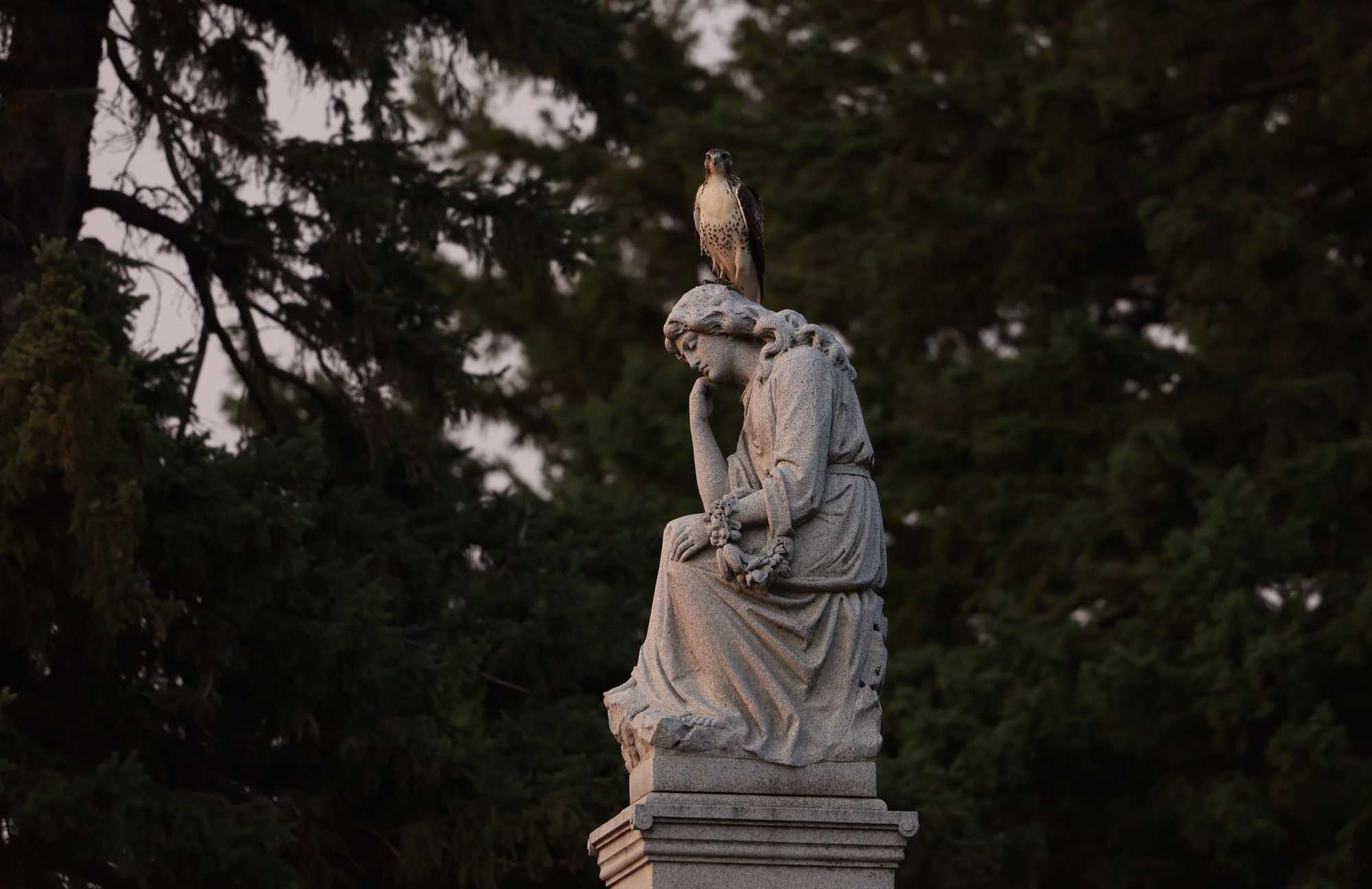
After a young woman from Neligh was murdered five years ago, the Ponca tribe donated a bench in her memory. It felt important, Wright recalled, for his people to make some lasting gesture of remembrance to her family.
The bench was built of concrete, so it would last, and placed in a park beside the Elkhorn River. When tribal leaders met with the family, they learned that the young woman who was killed, Sydney Loofe, had cared for the grave of White Buffalo Girl.
The bench was dedicated on May 23, 2018, the anniversary of White Buffalo Girl’s death, in a ceremony anchored by traditional Ponca prayers.
“It’s such a loving gesture,” one tribal leader said then, “to teach your children to be good to someone else like it was your own.”
Join the discussion: Comment on this story.
Credits
- Reporters: Julian Benbow, Diti Kohli, Hanna Krueger, Emma Platoff, Annalisa Quinn, Jenna Russell, Mark Shanahan, Lissandra Villa Huerta
- Photographers: Erin Clark, Pat Greenhouse, Jessica Rinaldi, and Craig F. Walker
- Editor: Francis Storrs
- Managing editor: Stacey Myers
- Photo editors: William Greene and Leanne Burden Seidel
- Video editor: Anush Elbakyan
- Digital editor: Christina Prignano
- Design: Ryan Huddle
- Development: John Hancock
- Copy editors: Carrie Simonelli, Michael Bailey, Marie Piard, and Ashlee Korlach
- Homepage strategy: Leah Becerra
- Audience engagement: Lauren Booker, Heather Ciras, Sadie Layher, Maddie Mortell, and Devin Smith
- Newsletter: LaDonna LaGuerre
- Quality assurance: Nalini Dokula
- Additional research: Chelsea Henderson and Jeremiah Manion
© 2022 Boston Globe Media Partners, LLC
